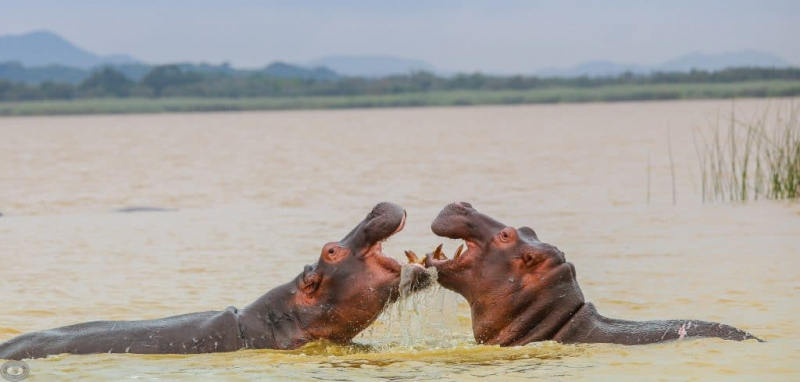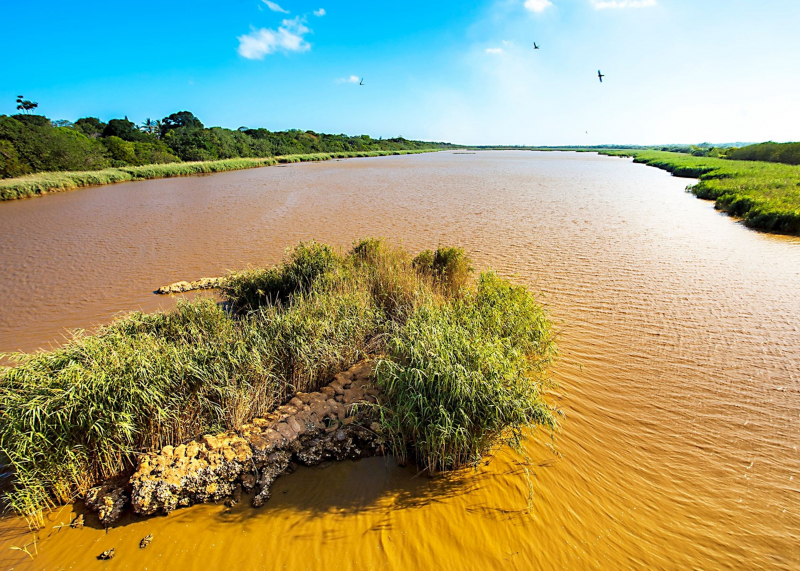Lake St. Lucia
A famous World Heritage Site of Isimangaliso Wetland Park, lake St. Lucia is not only the best lake to visit in South Africa, but also one of the largest lakes in South Africa with a length of 80 km and a width of 23 km. You can spot a hippo, reedbuck, and waterbuck on the shores of Lake St. Lucia and it is also home to about 150 species of fish. Currently, a project has been undertaken by the surrounding park to protect and preserve the lake from damage caused by dredging. Lake St Lucia (also known as lake Saint Lucia) is a system of estuary lakes in northern KwaZulu-Natal, South Africa. It is the largest estuarine lake in South Africa, covering an area of about 350 square kilometers. The lake was named Santa Lucia by Manuel Perestrello on December 13, 1575, the feast day of Saint Lucy. It was later renamed, St. Lucia.
Lake St. Lucia includes beaches and coral reefs, the most southerly in the world; marshes and wetlands on the north side of the lake; and the dry western shore of the lake, where there are scrubs as well as rare sand forests. There is a wide variety of animal life in the park, from more giant aquatic creatures such as hippos and whales to smaller antelopes and a wide variety of birds, making it one of the most popular viewing destinations in the world. Traditionally, visitors to the lake are South Africans on holiday. The accommodation is pretty basic and primarily self-catering. While this is still an option for those who want a more basic lake experience, several small private guesthouses also allow you to enjoy the area a little more comfortably.
- Nearby Attractions: Cruising, Kayaking, and visiting the crocodile center near the lake
- Location: St Lucia, Umkhanyakude District, KwaZulu-Natal province, South Africa








